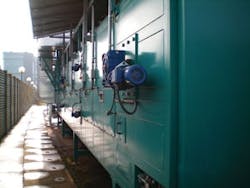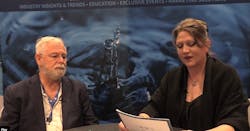Two Sandia climate study projects are getting a boost this year with the help of $5 million from the American Recovery and Reinvestment Act. Half of the funds will be used to prepare the Atmospheric Radiation Measurement program near Barrow, Alaska, for several new instruments. Photo: Sandia National Laboratories.The teams, led by Mark Ivey at Sandia/New Mexico and John Goldsmith at Sandia/California, are receiving $2.5 million each.
Ivey said his team's share will be used to prepare the ARM Climate Research Facility (ACRF) near Barrow, Alaska, for several new instruments, including scanning cloud and precipitation radars, improved balloon sounding systems, carbon flux instruments, and several new lidar (light detection and ranging) systems.
One of these, a new high-resolution spectral lidar system, will allow the researchers to take better measurements of clouds and aerosols and help them build better climate change models. The infrastructure upgrades will include new building platforms, installation of improved power lines, and improved network communications.
Lidar is an optical remote-sensing technology that measures properties of scattered light to find range and/or other information of a distant target. It operates much like radar but measures light pulses instead of radio waves.
Measuring water vapor
The majority of the funding for Goldsmith's team will be set aside to develop a new Raman lidar for a permanent facility in Darwin, Australia, and to upgrade a 15-year-old Raman lidar at a site in the southern Great Plains near Lamont, Okla.
Raman lidar is an active, laser remote sensing instrument used to measure atmospheric water vapor -- a measurement important in studying climate change. Water vapor is inhomogeneous and difficult to measure remotely, but Raman lidar enables profiling of water vapor throughout the troposphere.
"We built the first Raman lidar for the ARM site in Oklahoma 15 years ago," Goldsmith said. "It has functioned so well that program leaders decided they want a copy for the Darwin site. The money from the Recovery Act is making it possible."
'Laser lab in a box'
The equipment in Oklahoma is up and running more than 90 percent of the time year-round and is effectively a "turnkey system" -- meaning that it requires almost no operator attention.
Goldsmith said it is a "laser lab in a box," housed in a standard shipping container with a window at the top for the laser beam to exit and a telescope and associated optics to measure backscatter radiation. In addition to profiling atmospheric water vapor, the systems developed for the ARM program also profile temperature, clouds, and aerosol particles.



